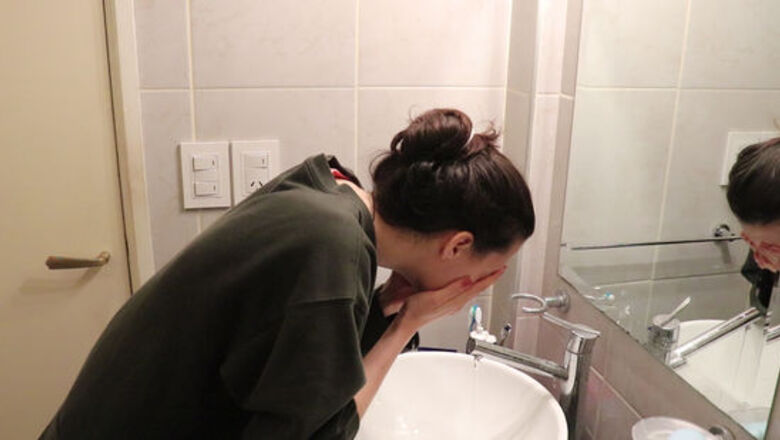
views
Covering Dark Circles

Wash your face using a gentle cleanser and cold water. Even splashing your face with cold water as a final step can help. This decreases blood flow in your face, and helps reduce puffiness, which can minimize the look of dark circles.
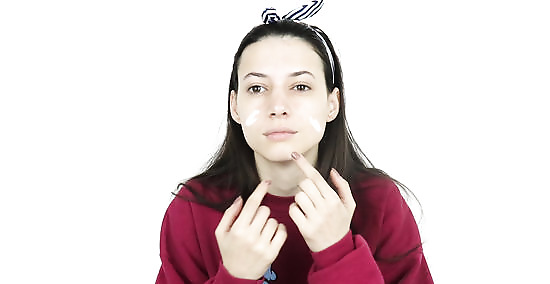
Apply a moisturizer. Apply a facial moisturizer over your whole face, and then dab an eye cream or moisturizer into the crease under your eye, avoiding your lids. This will help the makeup apply more evenly. If your skin is easily irritated, use a special eye moisturizer rather than a face moisturizer. Don't worry — it's a myth that rubbing your eyes will cause wrinkles, unless it becomes a constant habit.

Use a primer for even skin and long-lasting makeup. Primer can be used under foundation or by itself. It will smooth out your skin tone and keep your makeup in place longer. Use your fingers, an applicator, or a makeup brush to apply the primer onto your entire face the same way you would foundation. You can find a primer that's formulated for your skin tone: If you have dry skin, you may opt for a moisturizing primer. People with dull skin may prefer an illuminating primer. For oily skin, try a mattifying primer. You can also find color correcting primers for skin issues like redness. For example, you can find a green-tinted primer to neutralize redness.
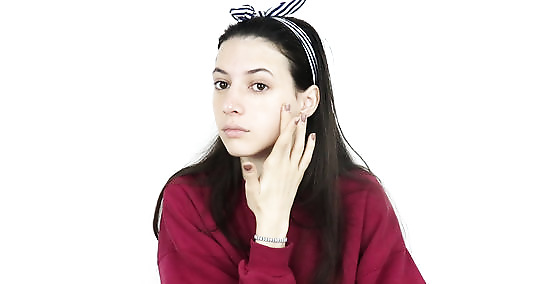
Put on foundation. As always, choose a foundation that matches your skin tone and skin type. Don't go overboard; this is a base for the concealer, not a product that will cover the circles on its own. Applying foundation first allows you to use less concealer, making a natural look easier to achieve. If you're applying powder foundation, makeup artist Franklin Sanderson suggests "placing your loose powder in a tissue and then shaking it out. This prevents you from applying too much at once." Powder foundations tend to be easier to control, allowing you to target the dark areas more accurately.
Choose a concealer that is one shade lighter than your skin. Starting at the corner of your eye near your nose, dab tiny dots of concealer under your eye from your nose to the outer corner of your eye. Then use your finger or a makeup brush to lightly tap the concealer until it's blended into your skin. According to makeup artist Franklin Sanderson, "You can also use your concealer to cover other imperfections on your skin." Do not rub the concealer, as this makes the coverage uneven. If you can still see the dark circles, you could try doing a color correction concealer before applying your foundation and regular concealer. If you have fair skin, apply a peach or apricot concealer to counteract the blue tones prevalent in most under eye circles. For medium skin, try an orange concealer. Dark skin tones can use darker oranges or red. Consider using a stick concealer. They use a thicker, creamier formula that covers dark areas more effectively. Keep in mind that a stick concealer may trigger an acne breakout on oily skin. If this is a concern, use a liquid concealer. Load your puff up with powder and gently press it under your eyes. This will add a little more coverage and help your concealer to last throughout the day.Watermark wikiHow to Cover Dark Circles
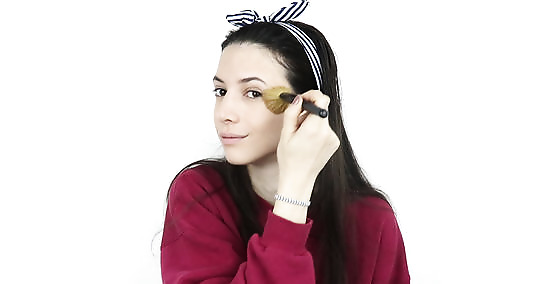
Blend thoroughly. Blend in the edges of the concealer until they are no longer visible. If the concealer is still obvious, apply any other desired makeup to the rest of your face and blend again. It may help to use a different shade of concealer on your cheeks and forehead, in between your skin tone and the tone of the eye concealer.
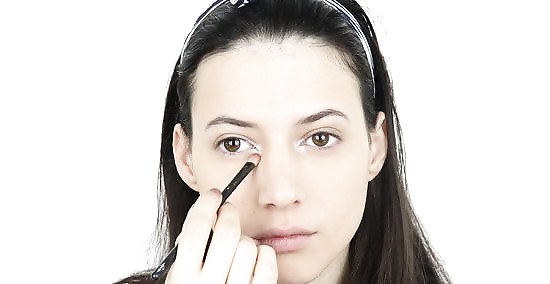
Apply shimmering beige or white eye shadow to your tear duct area (optional). This will immediately brighten up your eyes and make you look more awake. The brightness also draws attention away from under eye circles. For more staying power, use white eyeliner underneath the shadow.
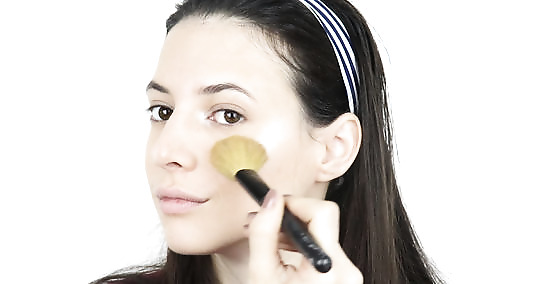
Highlight cheekbones (optional). Highlighter along the top of your cheekbone can reflect light to nearby shadows, brightening any remaining hint of darkness.
Preventing Dark Circles
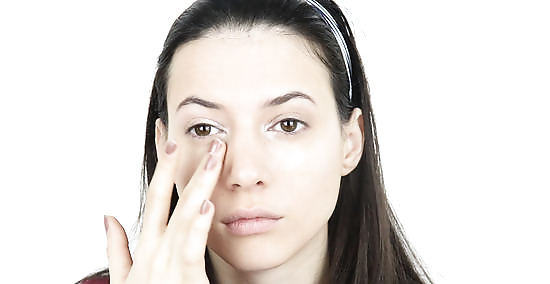
Protect your eyes from sun. Yes, your eyelids can get a tan, and the brown cast can make dark morning eyes harder to conceal. Use a moisturizer with SPF 25 or greater, or ordinary sunscreen. Sunscreen which uses only zinc oxide or titanium dioxide as the active ingredient is less likely to irritate the skin around your eyes.
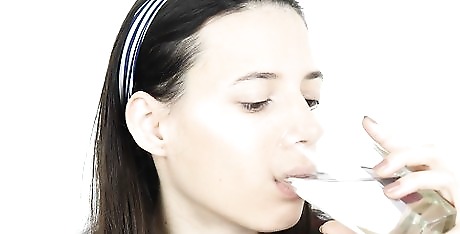
Make small lifestyle changes. Getting enough sleep can help you avoid pale skin that makes dark circles stand out. Drinking plenty of water and minimizing salt can prevent water retention, which is one factor in puffy morning eyes.
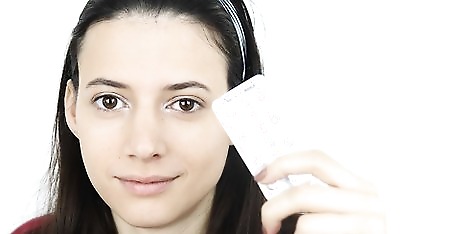
Treat allergies. If you have a congested nose or sinuses, your eyes probably appear darker due to swollen blood vessels. Take antihistamines or visit the doctor for other allergy treatments. These "allergy shiners" are more common in children and teens.
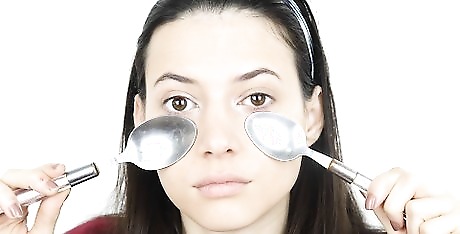
Fix puffy eyes. While this won't make your eyes lighter, it can make dark circles less noticeable. Here are a couple treatments: Chill a pair of spoons in the freezer. Lie down with the bowls of the spoons over your eyes and let the cold reduce the swelling. Give yourself a facial massage to encourage lymph drainage. If this helps reduce swelling, you may have poor lymph drainage, which you can address with lifestyle changes.

Visit the doctor if this problem appeared suddenly. While eyelids do change in appearance as you age, this is a very gradual process. If your eyelids have become much darker or more swollen in the past few months, ask your doctor to examine them. There are many conditions that can cause a change in eyelid appearance.



















Comments
0 comment